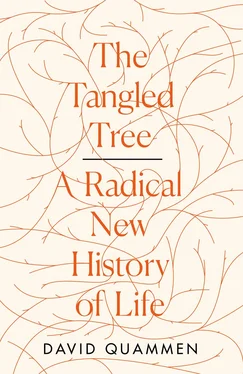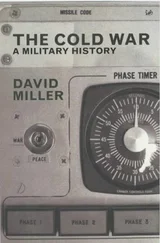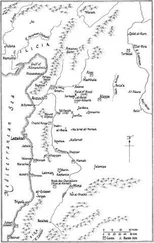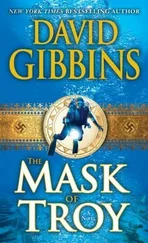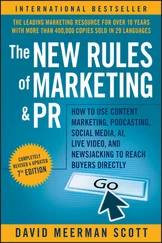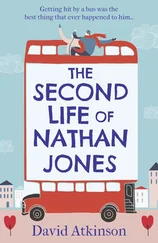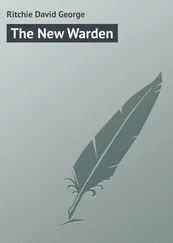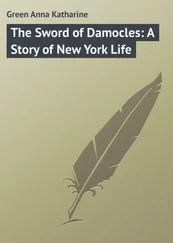Then suddenly Brenner let out a “yelp.” He began talking fast. Crick began talking back just as fast. Everybody else in the room watched in amazement. Brenner had seen the answer, and Crick had seen him see it. The ribosome did not contain the recipe for the protein; it was a tape reader. It could make any protein so long as it was fed the right tape of “messenger” RNA.
This was back in the days before digital recording, remember, when sound was recorded on magnetic tape. The “tape” in Brenner’s metaphor was a strand of RNA—that particular sort called messenger RNA (one of several forms of RNA that perform various functions) because it carries messages from the cell’s DNA genome to the ribosomes. A ribosome consists of two subunits, one large, one small, fitted together and performing complementary functions. The small subunit reads the RNA message. The large subunit uses that information to join the appropriate amino acids into a chain, constituting the protein. The ribosomes and the messenger RNA, plus a few other pieces, constitute what Woese called the translation apparatus. By 1969, when Woese wrote to Crick, their crucial roles were appreciated.
Every living cell, including bacteria, including the cells of our own bodies, including those of plants and of fungi and of every other cellular organism, contains many ribosomes. They function as assembly mechanisms, taking in genetic information, plus raw material in the form of amino acids, and producing those larger physical products: proteins. In plainer words: ribosomes turn genes into living bodies. Because the proteins they produce become three-dimensional molecules, a better metaphor than Brenner’s tape-reader, for our own day, might be this: the ribosome is a 3-D printer.
Ribosomes are among the smallest of identifiable structures within a cell, but what they lack in size they make up for in abundance and consequence. A single mammalian cell might contain as many as ten million ribosomes; a single cell of the bacterium Escherichia coli , better know as E. coli , might get by with just tens of thousands. Each ribosome might crank out protein at the rate of two hundred amino acids per minute, altogether producing a sizzle of constructive activity within the cell. And this activity, because it’s so basic to life itself, life in all forms, has presumably been going on for almost four billion years. Few people, in 1969, saw the implications of that ancient, universal role of ribosomes more keenly than Carl Woese. What he saw was that these little flecks—or some molecule within them—might contain evidence about how life worked, and how it diversified, at the very beginning.
Another of Woese’s penetrating insights, back at this early moment, was to focus on a particular portion of ribosomes: their structural RNA. Usually we think of RNA in the role I mentioned above—as an information-bearing molecule, single stranded rather than double helical like DNA, carrying the coded genetic instructions to the ribosomes for application. Transient in space (through the cell) and transient in time (used and discarded). But that’s only one kind of RNA, messenger RNA, performing one function. There’s more. RNA can serve as a building block as well as a message. Ribosomes, for instance, are composed of structural RNA molecules and proteins, just as an espresso machine might be made of both steel and plastic. “ I feel,” Woese confided to Crick in the letter, “that the RNA components of the machinehold more promise than (most of the) protein components.” Those RNA components held more promise for plumbing deep history, he reckoned, because they were so old and, probably, so little changed over time.
Woese saw the secret truth that RNA—not just a molecule, but a family of versatile, complex, underappreciated molecules—is really more interesting and dynamic than its famed counterpart, DNA. And this is where that family enters the story and begins taking its position near the center. Woese had decided he would use ribosomal RNA as the ultimate molecular fossil record.
“ What I propose to do is not elegant scienceby my definition,” he confided to Crick. Scientific elegance lay in generating the minimum of data needed to answer a question. His approach would be more of a slog. He would need a large laboratory set up for reading at least portions of the ribosomal RNA. That itself was a stretch at the time. (The sequencing of very long molecules—DNA, RNA, or proteins—is so easily done nowadays, so elegantly automated, that we can scarcely appreciate the challenge Woese faced. Work that would eventually take him and his lab members arduous months, during the early 1970s, can now be done by a smart undergraduate, using expensive machines, in an afternoon.) Back in 1969, Woese couldn’t hope to sequence the entirety of a long molecule, let alone a whole genome. He could expect only glimpses—short excerpts, read from fragments of ribosomal RNA molecules—and even that much could be achieved only laboriously, clumsily, at great cost in time and effort. He planned to sequence what he could from one creature and another and then make comparisons, working backward to an inferred view of life in its earliest forms and dynamics. Ribosomal RNA would be his rabbit hole to the beginning of evolution.
Ribosome structure and function: converting messenger RNA to protein.
Gearing up the laboratory would be step one. Given his low level of administrative skill, he admitted to Crick, that much would be difficult. But besides lab equipment and money and administration, Woese perceived one other necessity. “ Here is where I’d be particularly gratefulfor your advice and help,” he told Crick. He hoped to enlist “some energetic young product of Fred Sanger’s lab, whose scientific capacities complement mine.” By that, he meant: for this great sequencing effort, Woese would need a helper who knew how to sequence.
13

Fred Sanger’s pioneering work was the standard at that time for efforts at sequencing RNA. Building on ideas from earlier researchers, Sanger had developed techniques for cutting a long molecule into short pieces, then separating those pieces by electrophoresis, pulling them apart within a column of gel. The gel column served as a racetrack for fragments of different sizes. With an electrical force applied, each fragment would be attracted toward one end and would migrate through the gel at its own speed, dependent on its molecular size and its electrical charge. As their differing speeds spread them apart, the fragments would show as a characteristic oval spot in a two-dimensional pattern, as captured on film. Each oval could then be read as a short squib of code, using other means of cutting and pulling. This was an advance on the same general method that Pauling had recommended to Zuckerkandl for distinguishing variant forms of a molecule by “fingerprinting.”
Fred Sanger had two things, but perhaps not much else, in common with Linus Pauling: chemistry and a pair of Nobel Prizes. Unlike Pauling, he was a quiet, unassuming man, from a Quaker upbringing in the English Midlands, who won both his Nobels in the branch of science he and Pauling shared—he was the only person awarded twice for chemistry. He received the first prize in 1958, at age forty, for work on the molecular structure of a protein—specifically, bovine insulin. To solve that structure, Sanger adapted some relatively primitive methods from other researchers, in an ingenious way, allowing him to determine which sequences of amino acids compose the two long branches of the insulin molecule. This was a Nobel-worthy achievement for what it said not just about blood-sugar regulation in cows but also about proteins in general: that they’re not amorphous things but have, each protein, a determined chemical composition. From proteins, Sanger turned to sequencing RNA, then DNA, and won his second Nobel in 1980 for the culminating phase of his DNA work. Soon after, at age sixty-five, he retired from science and turned his energies to gardening. He had a nice little home in a village near Cambridge.
Читать дальше
